
views
Calculating RPM By Direct Observation
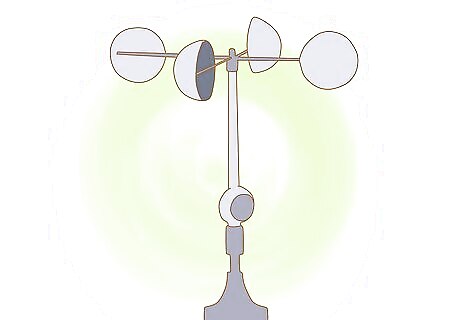
Pick a place on the rotating object to observe. This method works best for objects with long arms, such as an anemometer (device to measure wind speed) or wind turbine. Select an arm or blade to focus your observations on. You can mark the arm or blade in some way, such as by tying a colored thread or applying a dab of paint to the surface.

Get a timer. You need something to monitor the time with. A stopwatch or timer app on a smartphone or tablet works well for this.
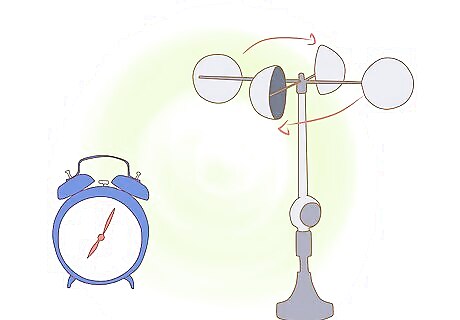
Start the timer.

Start counting the number of rotations your marked arm or blade makes. Be sure to count only when the marked arm or blade returns to the position at which it started.
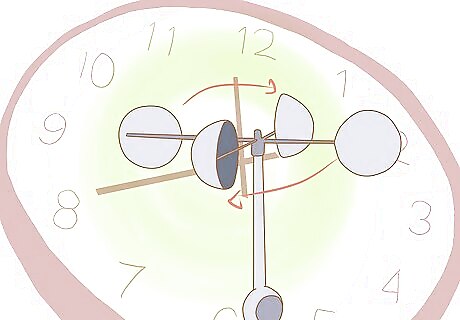
Stop counting when 1 minute has elapsed. This is how many revolutions per minute, or RPM, the object makes. Instead of stopping the count at 1 minute, you may want to count for 2 or 3 minutes and then divide the count by the number of minutes to get the RPM if the object rotates slowly. This will help you avoid estimating a partial rotation if the object does not return to its original position at the end of 1 minute. If the object rotates quickly, you may instead want to count for only 15 seconds and then multiply the result by 4 to get the RPM. You can relate the RPM of an object turned by wind to the actual wind speed by first finding the circumference traveled by one of the object’s arms in one rotation. You then convert this distance to either miles or kilometers and multiply that by the RPM to determine how much distance the object rotated through in 1 minute. Multiply this by 60 to determine how much distance was traveled in 1 hour, and you’ll have the wind speed
Finding RPM Gear Ratios
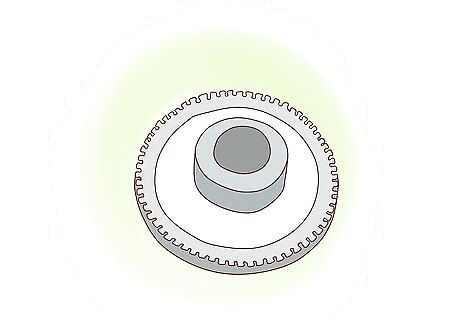
Count the number of teeth on the driver gear. The driver gear is the gear connected to a motor or other power source, usually by an axle. The driver gear’s rate of rotation is known. For the purposes of this example, we’ll treat the driver gear as having 80 teeth and a rotation rate of 100 rpm.

Count the number of teeth on the driven gear. The driven gear is the gear whose teeth mesh with those of the driver gear. The driver gear’s teeth push the teeth of the driven gear, which causes the entire driven gear to rotate. This is the gear whose rate of rotation we’re trying to find. For this example, we’ll assume two different driven gear sizes, one that’s smaller than the driver gear, and one that’s larger than the driver gear. The smaller driven gear will have fewer teeth than the driver gear. Our smaller gear will have 20 teeth. The larger driven gear will have more teeth than the driver gear. Our larger gear will have 160 teeth.

Find the ratio of the driver gear and driven gear. To find the ratio of the two gears, you divide the number of teeth in one gear by the number of teeth in the other. Although the correct way is to always divide the number of teeth of the driver gear by those of the driven gear or vice versa, we’ll divide the larger number by the smaller number. For our driven gear that has 20 teeth, we’ll divide the number of teeth the driver gear has, 80, by 20 to get 80 / 20 = 4. For our driven gear that has 160 teeth, we’ll divide that number by the number of teeth the driver gear has, 80, to get 160 / 80 = 2.

Calculate the RPM of the driven gear. How we figure this depends on whether the driven gear is smaller or larger than the driver gear. If the driven gear is smaller than the driver gear, we multiply the result of the ratio between the driver and driven gear by the RPM of the driver gear. For our smaller driven gear with 20 teeth, we multiply the RPM of the driver gear, 100, by the result of 4 from the previous step to get 100 x 4 = 400RPM for the driven gear. If the driven gear is larger than the driver gear, we divide the result of the ratio between the driven and driver gear into the RPM, of the driver gear. For our lager driven gear with 160 teeth, we divide the RPM of the driver gear, 100, by the result of 2 from the previous step to get 100 / 2 = 50RPM for the driven gear.
Calculating the RPM of a Moving Bullet
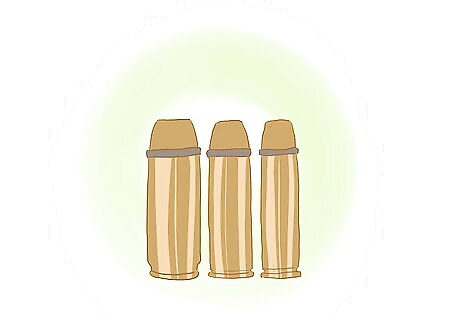
Determine the muzzle velocity of the bullet. Muzzle velocity is how fast the bullet travels through the gun barrel when it is fired. It is commonly measured in feet per second (fps, ft/s) or meters per second (m/s). For this example, we’ll assume a muzzle velocity of 2000 feet per second (609.6 m/s).

Determine the twist rate imparted by the barrel. The insides of gun barrels feature spiral grooves, or rifling, that cause the bullet to spin. This spin helps to stabilize the flight of the bullet as it leaves the barrel muzzle and speeds toward its target. Twist rate is specified as a a ratio of 1 spin to a length in either inches or millimeters. For our purposes, we’ll assume a twist rate of 1:10 inches (1:254 mm). The smaller the twist rate, the more spin will be imparted to the bullet by the rifling inside the gun barrel. Too much spin can lead to bullets blowing up or actually impairing accuracy for short-range shooting.

Convert the muzzle velocity into the same unit per second as the unit of the twist rate. How you convert depends on whether you’re working with feet and inches or with metric units. If the twist rate is given as 1 per a length in inches and the muzzle velocity is given in feet per second, you multiply the muzzle velocity by 12 to convert it to inches per second. For our example muzzle velocity of 2000 feet per second, multiplying by 12 gives 2000 x 12 = 24,000 inches per second. If the twist rate is given as 1 per a length in millimeters and the muzzle velocity is given in meters per second (m/s), you multiply the muzzle velocity by 1000 to convert it to millimeters per second (mm/s). For the metric measure of 609.6 m/s, multiplying by 1000 gives 609.6 x 1000 = 609,600 mm/s.

Divide by the result by the length of the twist rate. This will give you the rotation expressed in rotations per second. Dividing the muzzle velocity of 24,000 inches per second by the length of 10 inches gives 24,000 / 10 = 2400 rotations per second. Dividing the muzzle velocity of 609,600 mm/s by the length of 254 mm gives 609,600 / 254 = 2400 rotations per second. (As expected, the results are the same whether using feet and inches or their equivalent measures in metric units.)

Multiply by 60. There are 60 seconds in a minute, so the bullet will make 60 times as many rotations in a minute as it does in a second. Multiplying 2400 rotations per second times 60 gives 2400 x 60 = 144,000RPM.


















Comments
0 comment